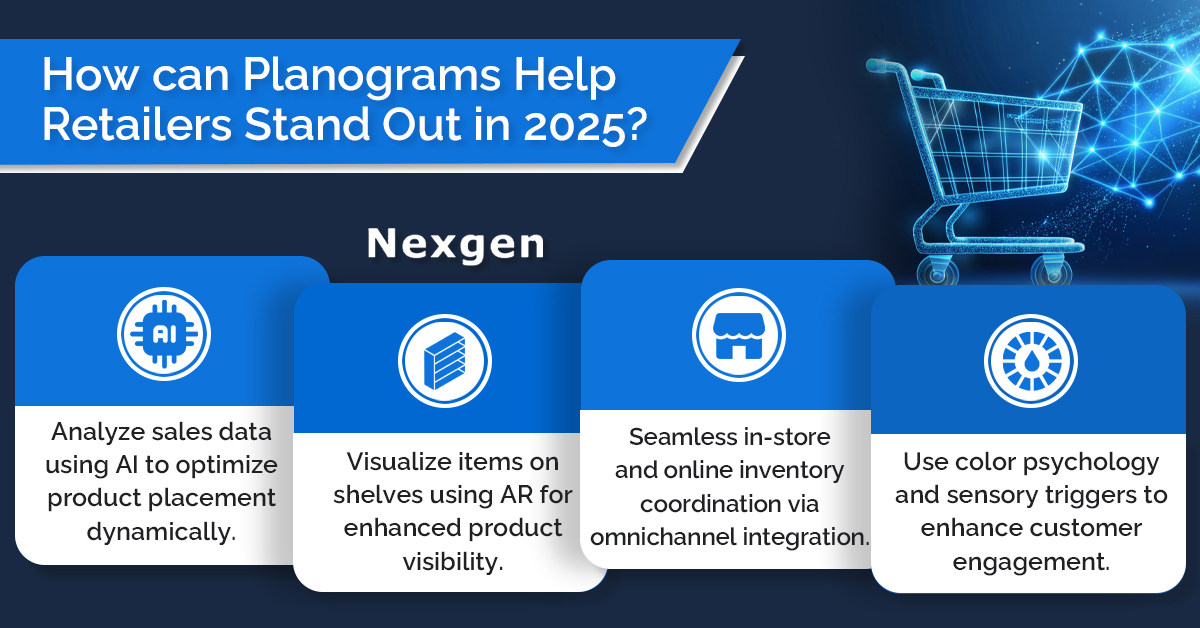In retail, where customer experience reigns supreme, effective visual merchandising is no longer an option but a necessity. Enter planograms, the strategic blueprints that guide product placement and presentation within a retail space. In 2025, planograms are not just about maximizing shelf space; they are about creating immersive shopping experiences that captivate customers and drive sales.
Types of Planograms
- Shelf planograms: These are the most common type, providing a detailed layout of how products should be placed on shelves, including height, width, and quantity. A grocery store could employ a shelf planogram to strategically place high-profit margin items, such as premium cheeses and specialty chocolates, at eye level and near the checkout counter to encourage impulse purchases.
- Floor planograms: These offer a shopper's eye view of the entire store, outlining the placement of different product categories and departments. A department store might use a floor planogram to guide customers through the store, placing high-traffic departments like women's clothing and shoes near the entrance and strategically locating less frequented departments, such as home goods, further inside.
- Promotional planograms: Designed for specific sales or events, these highlight promotional items and create eye-catching displays to drive impulse purchases. A supermarket might use a promotional planogram during a "Back-to-School" sale, featuring prominently displayed backpacks, lunchboxes, and school supplies at eye level and near the entrance.
- Seasonal planograms: Tailored to specific seasons or holidays, these showcase relevant products and create festive atmospheres. A home goods store could implement a seasonal planogram for New Year, featuring festive decorations, cozy blankets, and holiday-themed dinnerware prominently displayed throughout the store.
- Interactive planograms: Leveraging technology, these allow retailers to virtually experiment with different product placements and visualize their impact on store layout and customer experience. Retailers can use software to create virtual 3D models of their stores and experiment with different product placements, allowing them to visualize the impact on customer flow and optimize shelf space before making any physical changes.
How Planograms Can Help Retailers Stand Out in 2025?

- Enhanced customer experience: Well-executed planograms create a visually appealing and organized shopping environment, making it easier for customers to find what they need and discover new products.
- Increased sales: By strategically placing products, planograms can influence purchasing decisions and drive impulse buys.
- Improved inventory management: Planograms help optimize shelf space and minimize stockouts, ensuring that the right products are available at the right time.
- Brand consistency: Consistent product placement across multiple stores strengthens brand recognition and reinforces the overall brand image.
- Data-driven decisions: Planograms can be used to track sales data and analyze customer behavior, providing valuable insights for future merchandising strategies.
Overview of Nexgen POG
Nexgen POG is a robust and user-friendly cloud-based visual merchandising tool. It is designed for quick and efficient planogramming with minimal effort. Planogram in retail can be designed by easily dragging and dropping the products. The multi-device compatibility feature of POG allows you to obtain, share and edit planogram on any device, including your phone. It helps in designing store-specific planograms for increased product visibility and sales.
Get Your Free Trial Now!